HOW TO GET STARTED MAKING BEATS FOR ANY GENRE
In order to make a great beat, you need to understand actual drum skills and timing. This article will teach you beginning drum basics like structure and fills. We will also cover how to get a sound that is less robotic, more organic and dynamic. Lastly, you will learn the elements of beats by genre. You will be able to create a basic beat for Trap, Future House and Dubstep.
PANNING
Imagine yourself behind an actual drum kit. A hi-hat to your left, crash cymbals over your head on both sides, a snare between your legs, a kick drum in front of both feet, toms above the snare, getting larger as they go to the right to the large floor tom.
For those of you asking about wideness in your mix, an easy way to achieve this is panning your drums. It's rather simple. Just as if you were sitting behind that drum kit, pan accordingly. The hi-hat goes to the left, one crash to the left and one to the right, a ride cymbal to the right, the snare and kick are centered. If you incorporate toms, they will gradually be panned a little to the right more and more as they get larger. This is also applied for other percussive sounds. Pan them according to their playable location.
TIMING
To understand timing simply count out loud. 1 - 2 - 3 - 4.

Your hi-hat is your time marker. Between each number are additional opportunities for sound. We will get to that after we build our basic beat.
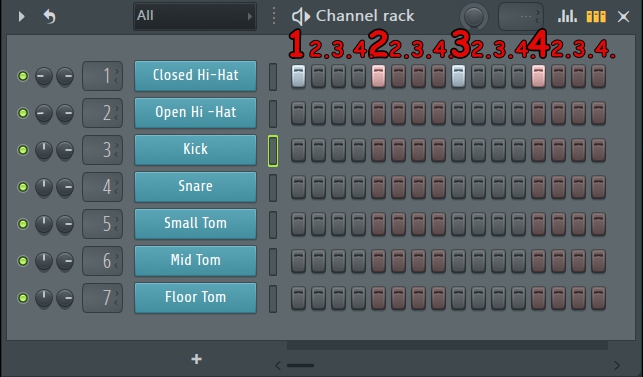
Want to participate? It’s OK, no one is watching. Bob your head. Each sound will be a motion.
1. Head up.
2. Head down.
3. Head up.
4. Head down.
Now just as with any song you listen to your head will be up for the kick.
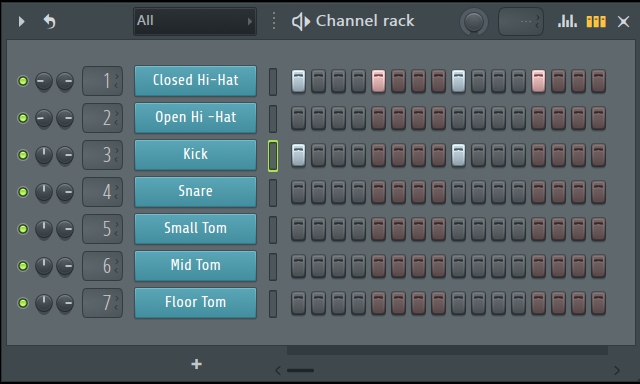
And your head will be down for the snare.
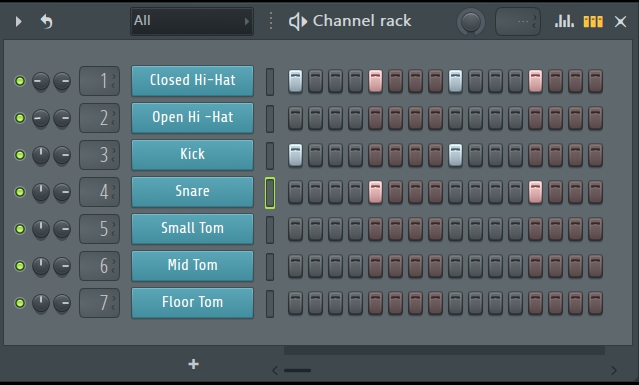
Now, to give it a faster feel, without changing the tempo, increase the times that the hi-hat is played.
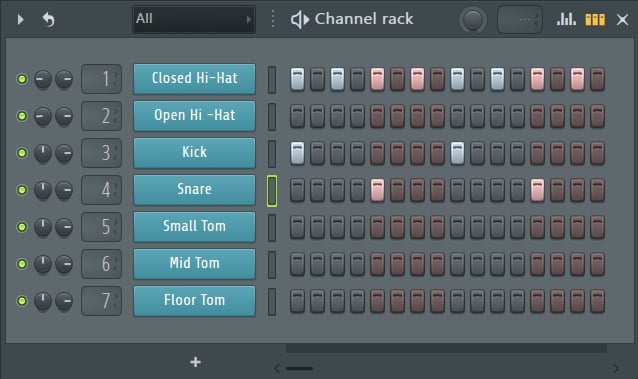
We have a beat that is very mechanical. Everything is exactly the same, over and over. To give it a more natural sound you can adjust the swing. Another way to break out of the mechanical sound is to make a simple adjustment to the velocity.
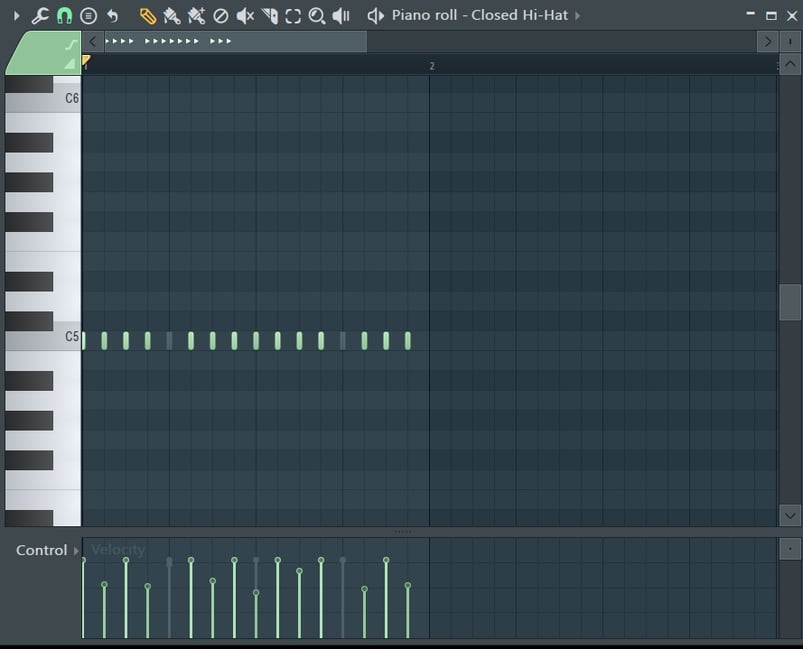
Not having every sound being played with the same intensity gives your beat a realistic texture. It’s subtle adjustments like these that add up in the end.
FILLS AND BUILD UPS
A good way to add style and character is by filling the empty space. Continuing to build off of our basic beat, I have now added an open hi-hat to the upbeat.

This is another time that the head bobbing exercise will come in handy. Go ahead an listen to your favorite song. Bob your head to it. When your head is down, that is the downbeat. When your head is up, that is the upbeat. Your head will typically be down when the snare hits. Due to the placement of an open hit hat (as shown above) you will find your head will toss back up when it hits.
Fills are a great way to indicate the final repetition of a particular section or that something is about to change. This can be done with additional hits to the snare. A good way to do this is by doing a triplet at the end. A triplet is a hit 3 times consecutively. This gives the listener a predictable comfort of knowing something is about to change.
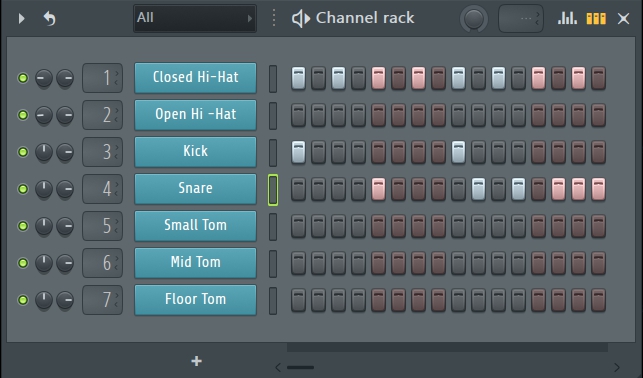
To create tension or to build up to a drop, the snare continuously increases in speed and momentum.
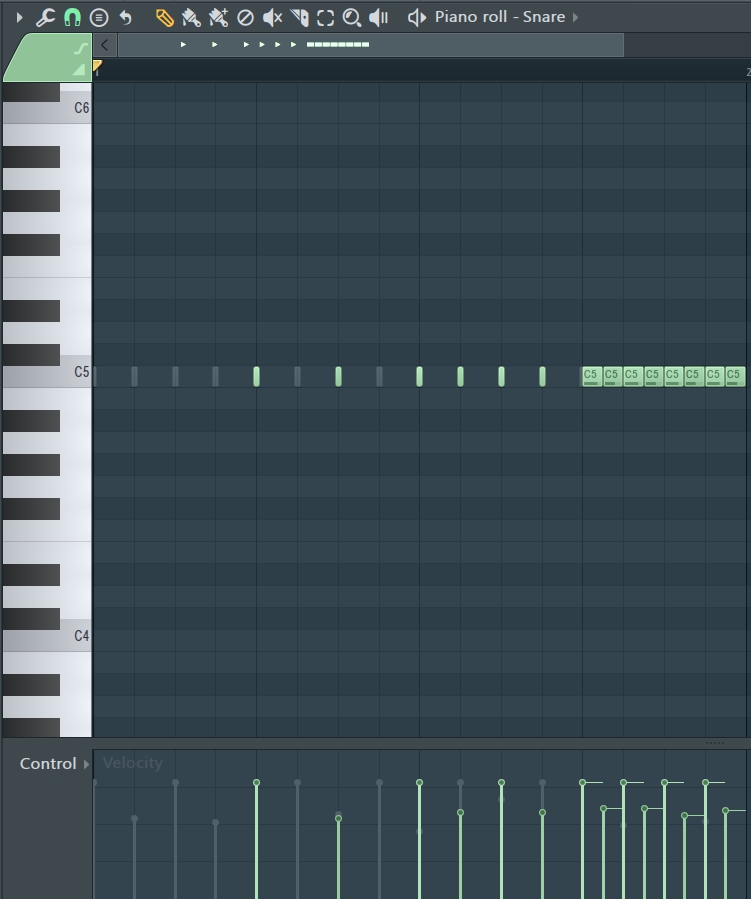
You can even drag it out and make the tension last a little longer.
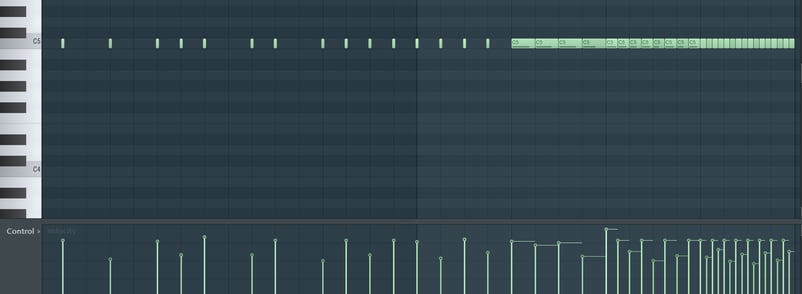
Now that you have the basics for creating a beat. Let's take a look a couple of different genres and learn about some of the signature techniques that define them.
FUTURE HOUSE BEAT BASICS
The tempo, or bpm, for Future House is between 120-130. For this example, I have set the tempo to 130 bpm. The kick is going to hit at 1-2-3-4. The snare will hit on 2 and 4. Sounds simple enough, right? For Future House the snare needs an extra pop. To create that sound you will want to pair it with a clap sound. Another staple to most Future House is to have a hi-hat on the upbeat.
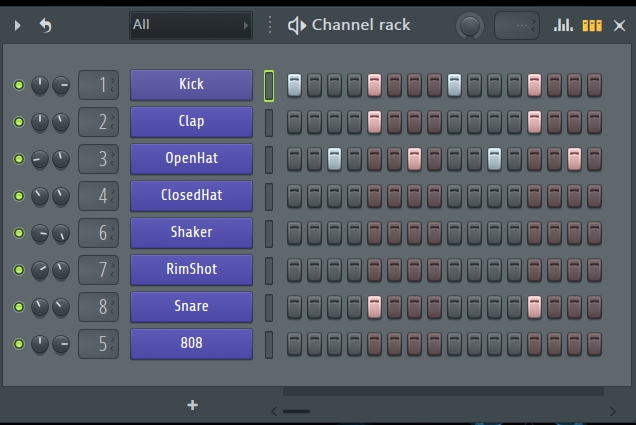
The basics of general house music do apply to the drums. The use of extra percussion. I have added 2 percussive elements. A shaker and a snare rim shot. While there is a pretty obvious pattern in the placement of the rim shot hits, the shaker sound placement is a little random. This helps make good use of empty space while giving more emphasis to the kick hits.
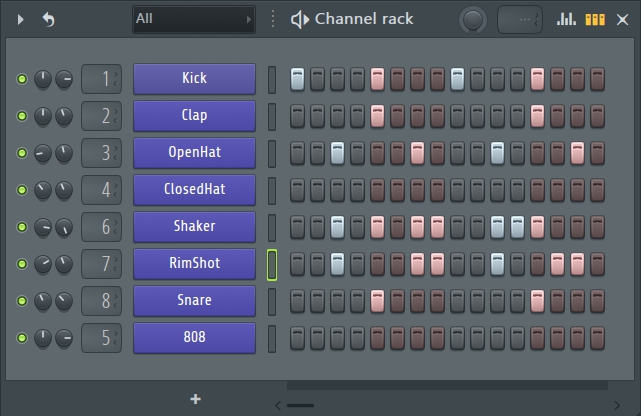
Take a listen to the end result by clicking HERE.
For a free sample pack with Future House drum sounds click HERE.
TRAP BEAT BASICS
The tempo, or bpm, range for Trap is 135-160. The staple of Trap is the 808. The world-famous bass hit. Other attributes include a Jazz style kick pattern, layered hi-hats, reverb applied to the snare and clap and rather than 4 bars, use 8.
Trap was built around the Roland TR-808. Below you will find links to free plugins that emulate the TR-808.
Alipapa - VR-08.
Available VSTi and VST2 format.
Download HERE
Tactile Sounds - TS-808.
Available as 32bit VST for Windows.
Download HERE.
Electronik Sound Lab - RVK808.
Available VST and AU formats.
Download HERE.
Starting out, our 808 is going to play at the same time as the kick. To learn how to get the most out of layering an 808 and kick sound we have a basic tutorial that you can view by clicking HERE.
Another layer will be the snare and the clap.
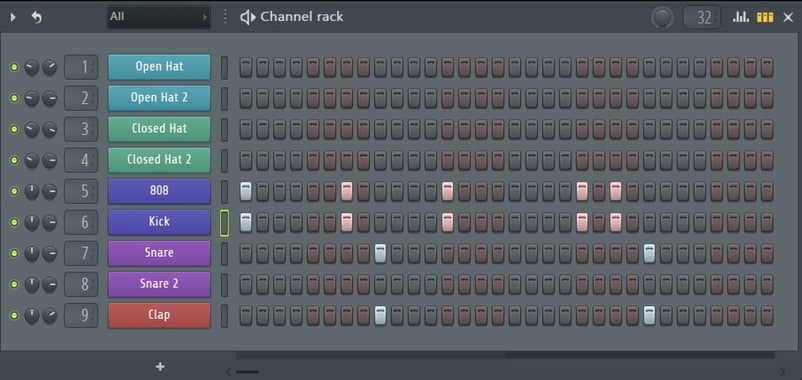
To accent the off-time hit that leads into the snare you can place an open hit hat.

The closed hi-hat is where you can really get creative. Since Trap is known for having some amazing hi-hat patterns.
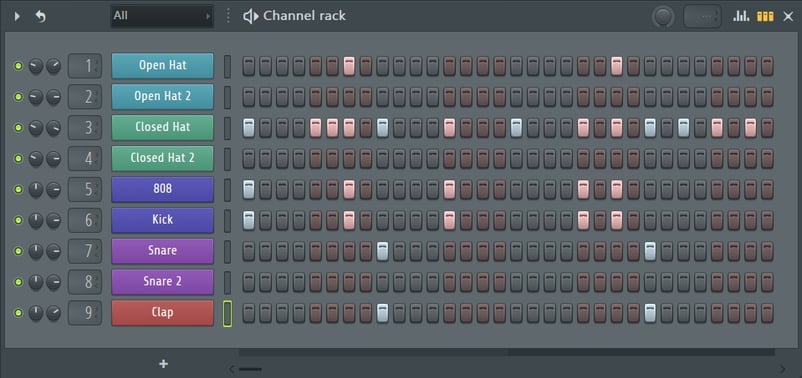
If you notice there are some hits that are right on time and others that are not. This helps create that off-time feel, even though the track is still in perfect time. Triplets are always good when leading up to or after a snare hit.
Of course, we can’t use the same beat throughout the entire song. So in order to change it up a bit, keep the kick, open hat, and clap the same but change the closed hat and snare to indicate the end of the repetition or to lead into a drop.
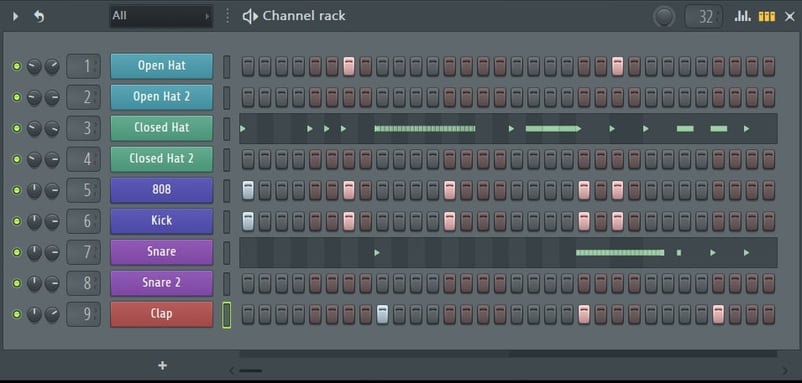
Let's focus on the closed hi-hat. Notice at the point when there are just massive amounts of hits crammed together? That is how to create a stutter or glitch type sound. And by increasing the velocity and volume with every hit, it sounds like it is building up.
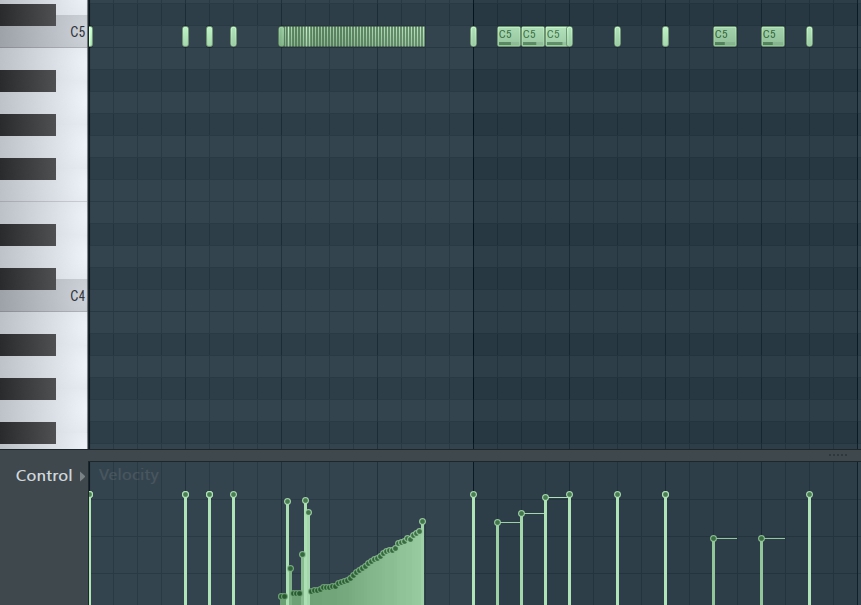
To hear the pattern click HERE.
Next, to the snare. I did the same thing as with the hi-hat just not as many hits.
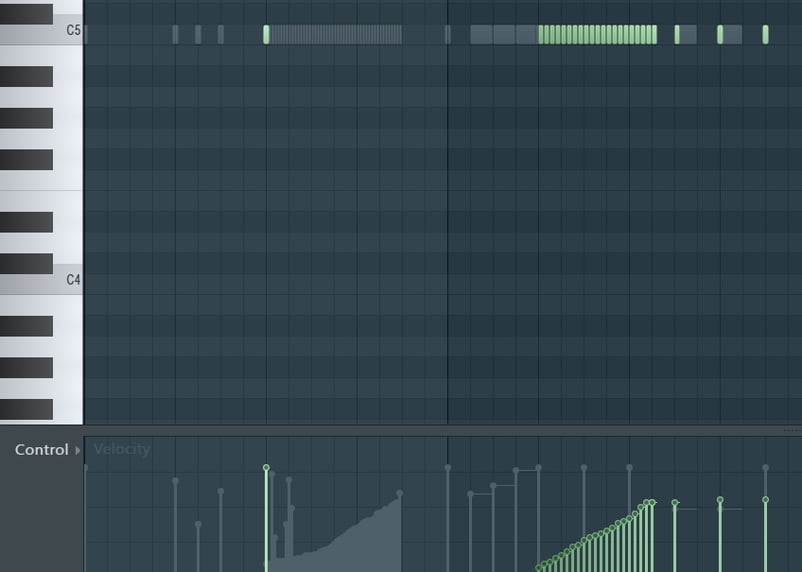
To hear the pattern click HERE.
Now that those adjustments have been made, you can listen to the beat as a whole by clicking HERE.
For a free sample pack with Trap style drum sounds click HERE.
DUBSTEP BEAT BASICS
For Dubstep there is a debate over the range of the average bpm. So I have taken the extremes of both and averaged them out to 130-142. For this example, I am setting the tempo to 140. I have loaded up 2 kick drums. One is a typical kick sound and the other is heavy in low-end frequency. Once I have them equally balanced I can use both for a real deep punchy kick sound.
The biggest element to a Dubstep beat is the illusion of off-timing. At a 140 tempo, I can achieve this by placing my kick at 1 and my snare at 3. By not placing the kick drum in a uniform order it feels more as if it is tripping over itself, a signature technique in Dubstep drums.
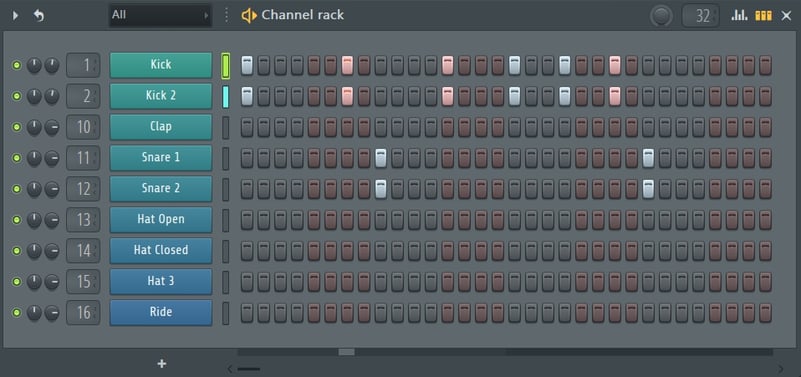
Dubstep has been known for the use of very open sounding hi-hats that simply hit every other time. It is very easy to do and works well when you don’t want to take away from a solid lead with some extensive hi-hat patterns. I also went ahead and extended the bars to 32, put a little fill at the end to signal either that it is going to start over and play the loop again or change into something else.
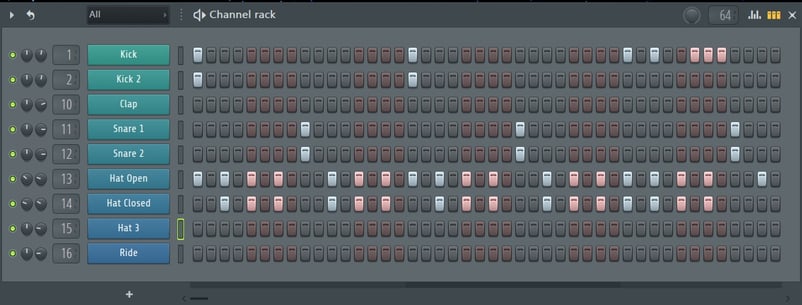
To give a listen to beat completed click HERE.
For a free sample pack with Dubstep style drum sounds click HERE.
CONCLUSION
Keep in mind this is merely a good starting point in beat basics. There are endless combinations, variations, and patterns you can use to customize, emphasize, and make it your own. Get creative and experiment as much as possible.
















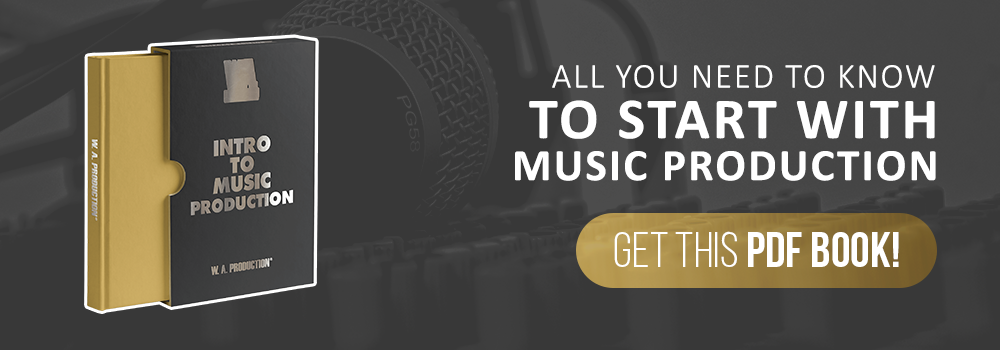
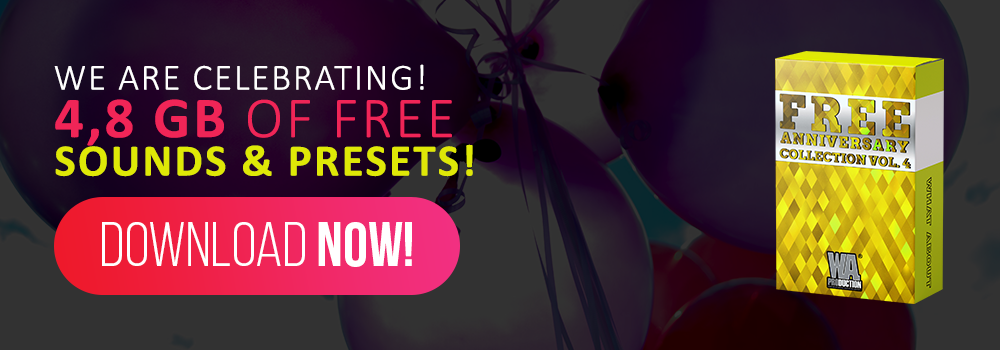
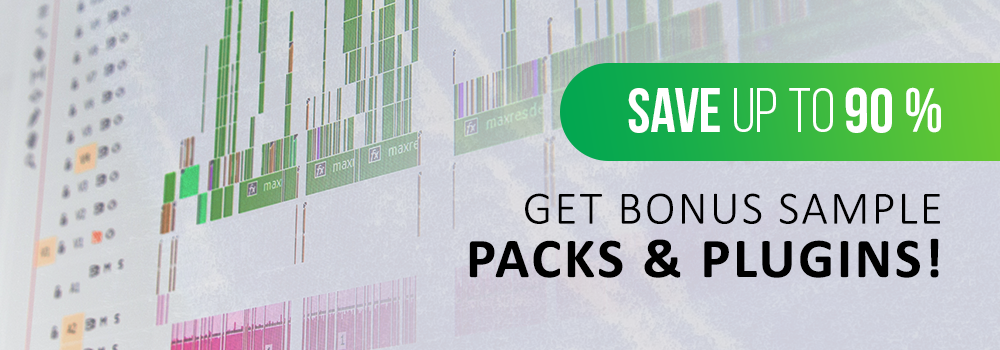
_Cropped.png?width=1600&name=02%20(2)_Cropped.png)




















Your Comments :